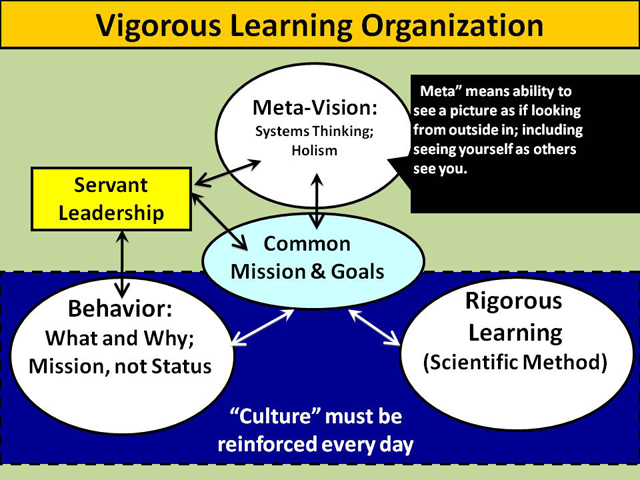May 13, 2010
“Too Big to Fail” justifies bailing out companies so big that discontinuing operations would disrupt everyone’s lives. But if their mission is that vital, they have a public service obligation. We should expect excellent performance; perhaps demand it.
“Too Important to Fail” describes many modest-sized organizations. For example, a community cannot allow a hospital on which it depends to fail.
Does your organization have a social mission vital to customers and other stakeholders? If not, could it have one? Should it? If so, perhaps it could start the journey toward becoming a vigorous learning organization. Such deep questioning begins to apply Compression Thinking to a specific organization.
Everything that must change seems overwhelming at first. The Compression Graph only samples a huge range of emerging issues. Changes to deal with them will take effort from all your stakeholders, and your core organization can’t change instantly, no matter how highly motivated.
But this is a big metamorphosis. Charters, business models, and value propositions may need major surgery. Pursuing a mission in Compression may make many business terms passé, but a transactional world will not fade soon, so any functioning organization needs a supporting financial plan – or “business model.”
This turn seems sharpest for a for-profit organization, but in any case, to judge the difference between what is done now and what will be done in Compression, map your current business model – how you make money. Then sketch a business model that might support the organization in Compression.

A few primer strategic questions are below. You’ll think of more.
- To become full-stakeholder organization pursuing a social mission, how must its charter and governance change?
- How are service life cycles or product life cycles likely to change? What new customer relationships, supplier relationships, employee relationships, core competencies, and behaviors will be needed?
- Who do you need to link to? One organization isn’t likely to get far by itself.
- To develop everyone into professionals, how must reward and recognition systems change?
- How can the organization get “the right people on the bus?”
- What novel business plan will keep you financially viable doing this?
- To lead people in this change, what kind of leadership will be necessary?
